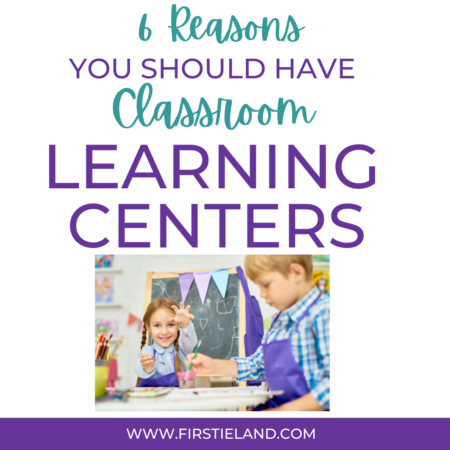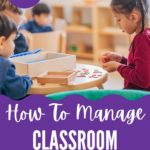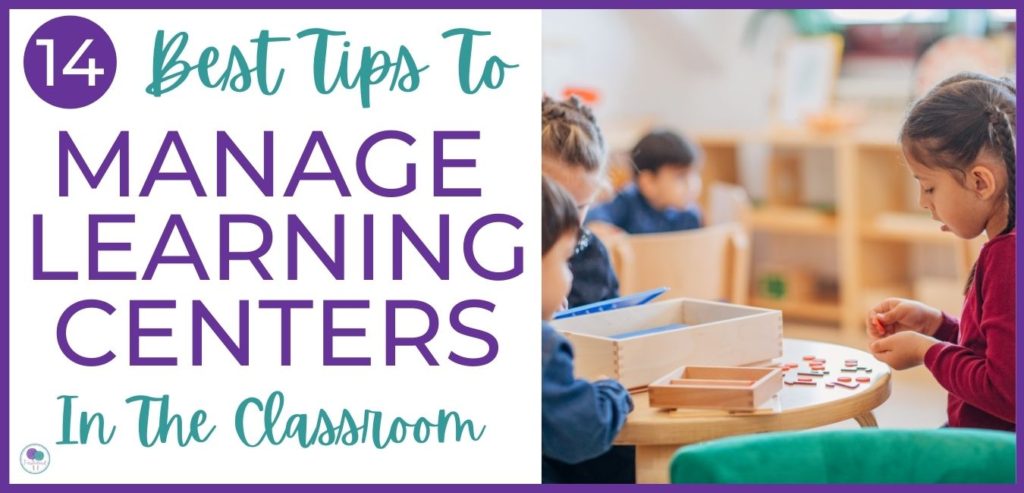
Are you wondering how to manage centers in the classroom? There are many benefits to having classroom learning centers but if your center management isn't on point it's easy to give up. Good classroom management is the key to successful center time! Take a look at these classroom center ideas that will take your learning center time from drab to fab!
Introducing Learning Centers In The Classroom
1. Model For The Students
The most important step in successful learning center management in kindergarten or first grade is modeling how to use each center. If you do anything else, don't skip this step. Many teachers will feel frustrated after a few days or weeks because students are off task, not using the materials appropriately, and basically just fooling around. But this doesn't have to be the case for you!
2. Introducing Your Classroom Learning Centers
The first thing you'll need to do is set up all the centers in your classroom. Next, introduce each math and literacy center one at a time and show students your expectations for each center. Be specific. Tell them how you want things to be put away, how to clean up the center, and how to use the materials in the right way. Give examples of what they should and shouldn't do at each center. Some examples of learning centers in the classroom are:
- Math center
- Word work center
- Library center
- Listening center
- Art center
- Spelling center
- Big book center
- Puppets or retelling center
- Writing center
- Computer center
- Tablet Center
- Block center
- Sensory center
Choose 1-2 students to model how to use each learning center. Let these students go to the center and use the materials while the rest of the class does something quietly in their seats. As the students are working at the center, mention the things that they are doing the correct way. Say things like “I like how Billy is throwing his scraps in the trash can at the Art Center” or “I like how Sarah is putting the book back on the shelf in our Library Center the right way”.
3. Discuss Each Learning Center
After you've given the model students about 10 minutes at the center, gather together for a class discussion. Take a few minutes to talk about what the students did correctly at the center and what could have gone better. Make a T Chart for each center and write how each center should and should not look. Hang this chart at your center so you can remind students what this center looks like, sounds like, and what they should be doing at the center.
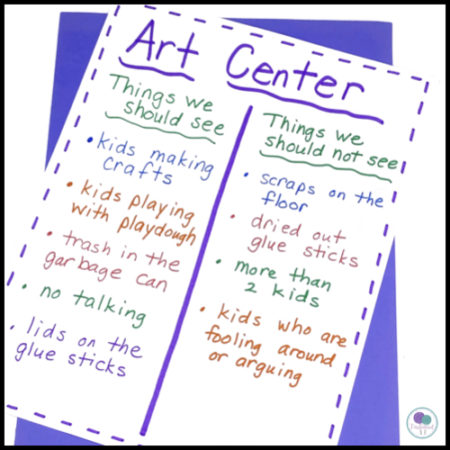
4. Create A Classroom Learning Centers Rules Chart
It's not necessary to have a rules chart for each of the learning centers in your classroom. However, it's a good idea to have one general classroom rules chart for managing your centers. Some of the different things to think about when teaching your learning center rules are:
- How many students can be at the center?
- How loud can it be during center time?
- What are the rules for cleaning up?
- What should students do during center time?
Keep your learning center rules on a prominent bulletin board so that you can refer to them when needed during the school year.
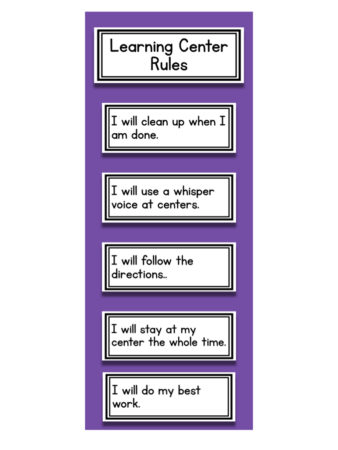
5. Create A Daily Rotation Schedule
When planning your learning center management, you'll want to create some kind of daily schedule for you and your students to follow. Generally, teachers are working with small groups of students during center time. Think about how much time you have and how many small groups you will work with.
For instance, if you have 60 minutes you might try to work with 3 small groups for 20 minutes each. That means you will need a rotation schedule for students to be in 3 different places. As an example, students could rotate from centers to small groups and then to computers or silent reading. There are many ways that you can set up a daily schedule as seen below.
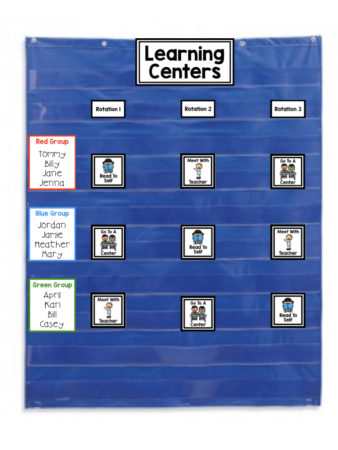
6. Directing Students To Centers
Next, you'll need to decide how you will direct students to learning centers. Will you use some kind of choice board? If they're allowed, many students will choose to go to the same center day after day. But of course, you won't want that. Students should be required to go to all of the centers so that they can experience and practice all of the skills each month.

Here are a few different ways that you can choose to have students pick their center:
- Choice Boards
- Clip System
- Checklist
- Center Log
7. Using A Learning Center Log
I'm a big fan of keeping things very simple in my classroom. Sometimes things that look super cute on Pinterest, end up being a lot of work in the end. My preferred method of keeping track of students at centers is this very simple one-page log.

At the beginning of the week, each student gets a new log. They can make the choice of which center they want to go to each day and then they mark it off at the end of centers each day. During our Quick Checks, I check to make sure they marked where they went that day. Students know they can't go back to that center until their learning center log is filled up. When their log is full, they get a new one and start all over again. Super easy and quick!
Managing Learning Centers In The Classroom
8. Choose Learning Centers Managers
There are many benefits of learning centers in the classroom. When students are at learning centers it's the perfect time for you to meet with small groups of students for intervention. However, what do you do if a student needs help or has a question?
After you've introduced each center, it's a good idea to choose one student to be the manager. Most teachers have students use learning centers during their small group time. One of the biggest struggles teachers have is the constant interruption from students when they're trying to work in small groups.
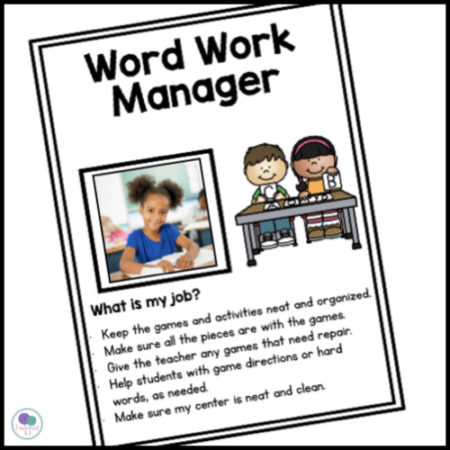
You can solve this problem by choosing some responsible students to be in charge of your math and literacy learning centers. The managers can be responsible for replenishing supplies like paper, glue, and crayons. They can help students who have a question or need help with equipment. This cuts down on students interrupting you during small groups.
The learning center manager can also make sure that the area is kept neat and clean. They can tell the teacher if something is missing, broken, or needs replaced. You can hang manager signs at each center with the child's picture or name so everyone in the class will know who to ask if they have a problem or a question.
9. Limit The Number Of Students
It's very important to consider how many students you'll allow at each center at a time. One of the biggest mistakes a teacher can make is not putting a limit at a center. This creates problems like fighting, not enough room, not enough supplies, and lots of noise!
When I first started teaching I allowed four students at each center. I quickly found out this wasn't going to work for me. It was too noisy and there was too much arguing between students. I decided that I would change and allow two students to work together at a center. This was much better but I found that when a lot of students were at centers at the same time, it was still too noisy.

Eventually, I realized that students didn't need a partner to work at learning centers and limited it to one student at a time at each center. This was when the real magic began to happen during math and literacy centers. Students were on task and doing the activities correctly, without other friends to distract them or fool around.
Whatever you decide, fewer students at each center is your best bet. You will have fewer problems, and fewer interruptions, and students will be more likely to complete the tasks at your centers.
Maintaining Learning Centers In The Classroom
10. Rotate Your Learning Center Materials
It's important to keep your learning centers fresh and interesting. When students visit a center and there's not enough paper, the markers are dried up, crayons are broken and game pieces are missing – that's when trouble starts to arise.
Decide how often you'll change out your learning center materials. Some teachers do this weekly but I found this to be too time-consuming. One way to manage classroom learning centers is to change the materials with monthly learning centers.

Using cute holiday and seasonally themed activities will keep students excited and interested in coming to the centers. Some materials at your centers can remain the same all year. For instance, your library books will remain the same all year, and art supplies like playdough, markers, and fancy craft scissors will stay at your art center. Your math center should always have manipulatives like unifix cubes, pattern blocks, dominoes, and dice.
If students complete the new monthly activities before their center time is over, they can always use the extra materials to keep them busy. Head over here to see some ideas for each of your monthly centers:
- September learning centers
- October learning centers
- November learning centers
- December learning centers
- January learning centers
- February learning centers
- March learning centers
- April learning centers
- May learning centers
11. Organizing Your Classroom Learning Centers
It's important to keep your center materials neat and organized in some manner. You can keep materials in labeled boxes, a file cabinet, or ziplock bags. Decide if you want to keep your materials organized by themes, holidays, seasons, or subjects.
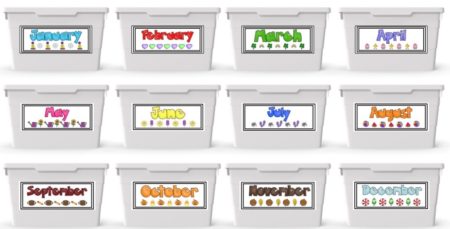
In my classroom, I chose to organize my centers by month. I had a large ziplock bag for each learning center in my room and kept the monthly materials for each center in these bags. Then, I put all the ziplock bags for each month in one large Rubbermaid tote. I used these free labels to label each box by month and kept them stored in a closet in my classroom.
At the beginning of each month, I simply grabbed the new box and could easily set up my stations in about 30 minutes for the entire month.
CLICK HERE TO GRAB YOUR FREE LEARNING CENTER LABELSWorking At Classroom Learning Centers
12. Classroom Learning Centers Should Be Practice
Another important thing to remember when managing learning centers in the classroom is that they should always be practice. Never put a brand new skill at any center. The activities that students are doing should be skills that you've already introduced in your whole group lessons in class.

It's okay to put a new game or activity at a center as long as the SKILL is not new. Introduce any new games to students before putting them at your centers. You can play a game in a whole or small group lesson and then put it at the center.
At the beginning of each month, I usually take about 20 minutes to go around to all of the centers and talk about the activities. I do this on a Friday afternoon and then on the following Monday, I would do a quick run-through again. After that, students were able to use the materials for the rest of the month.
13. Keep Students Accountable
Students should know that even though they're just practicing, you'll be checking their work in some way. When students know that you'll be checking, they're more likely to stay on task and do a better job.
I don't recommend grading center work. It's practice time, not assessment. However, you should check the student's work in some manner. There are several ways that you can do this:
- Keep a box at each center to collect materials so you can look at them at another time.
- Keep a hanging file box with a file for each student to put their work into.
- Quick Checks – this was my preferred method of checking work. At the end of center time, have every student take any completed work back to their seat. Walk around the room and do a quick check to see that the student tried their best and then have them put it in their book bag or mailbox. There's no need to grade the work.
- If a student went to a center where there was no “finished product” simply ask them what they worked on that day.
14. What Are The Rest Of The Students Doing?
One of the biggest questions teachers have when meeting with small groups is “What's the rest of my class doing?”. During small group time, students can work independently in many different ways. Students can be working at a learning center, reading silently, working on a worksheet at their table, working on a computer or a tablet, or meeting with the teacher in a small group.

If you're ready to manage your classroom learning centers like a rock star, I have everything you need. This resource includes learning center logs, 35 different center signs, manager signs, checklists, sample schedules, and management boards. Click here to take a closer look!
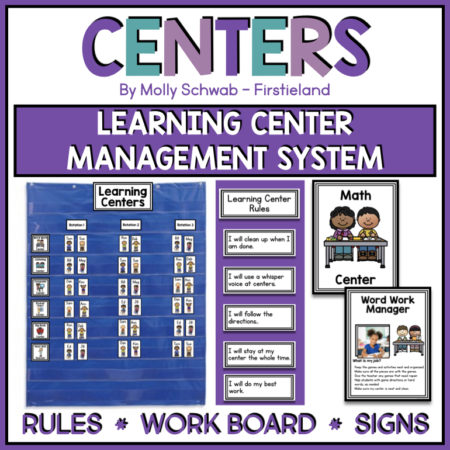
Need math and literacy centers for the entire year? This bundle has everything you need to keep your kids engaged, learning, and on task! Click here to take a look.
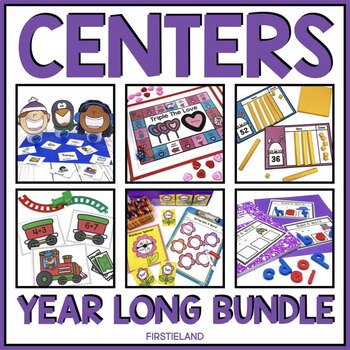
Want to learn more about the benefits of using math and literacy centers in your classroom? Check out this post.
